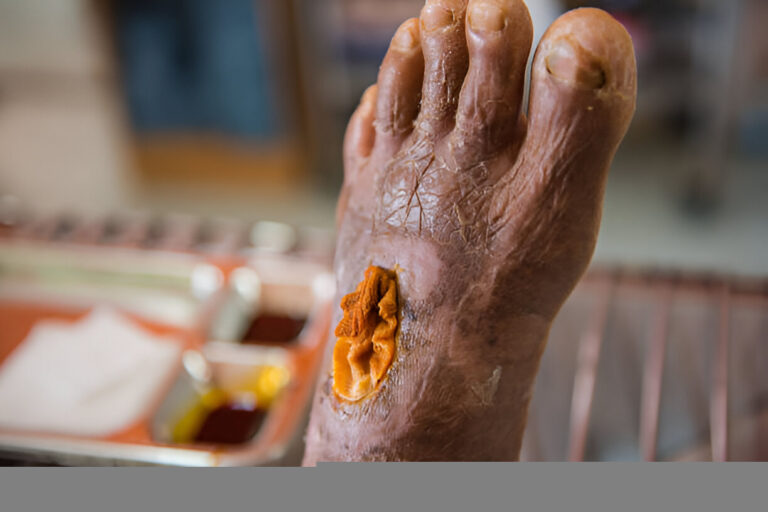Foot ulcers can be one of the more serious complications linked to diabetes. These open wounds develop slowly but can worsen quickly without proper attention. Preventing them is ideal, but when they do occur, knowing how to respond can make all the difference. Let’s explore how the right care and support can help manage these wounds effectively.
Understanding the Cause and Risk Factors
A foot ulcer from diabetes often starts with something as simple as a blister or small cut. Over time, high blood sugar can damage nerves and reduce circulation, especially in the lower legs and feet. Without enough blood flow, the body struggles to heal even minor wounds. These factors combined increase the risk of infection and further complications.
Foot ulcers don’t always cause immediate discomfort, which is why regular checks by professionals are so important. Factors like poor footwear, walking barefoot, and dry skin raise the risk even more. Recognizing the early warning signs, like redness, swelling, or drainage, can prevent bigger issues.
Cleansing and Protecting the Wound
Once a doctor identifies an ulcer, the first step in treatment is thorough cleansing to prevent infection. Healthcare providers typically use a gentle, sterile solution to wash away debris and bacteria. After cleaning, doctors apply moisture-balancing dressings that support tissue repair while keeping the wound protected.
Protecting the wound from pressure is equally important in medical care. Physicians often recommend offloading techniques, such as special footwear, boots, or braces, to reduce weight on the affected area. Regular follow-up visits allow the medical team to monitor healing, adjust dressings, and check for signs of infection or complications.
Effective Treatment by Experts
When basic care isn’t enough, advanced methods can improve healing outcomes. Expert clinics offer a variety of techniques designed for tough-to-treat wounds. These might include:
- Debridement to remove dead or damaged tissue
- Specialized wound dressings and gels
- Compression therapy to improve circulation
- Infection control with antibiotics
- Surgical interventions, when necessary
These options are selected based on how deep or infected the wound is. Trained professionals assess progress at every visit and make changes as needed.
Preventing Ulcers Before They Begin
Prevention starts with keeping blood sugar levels in a healthy range. When glucose is under control, wounds are less likely to occur and heal more easily if they do. Daily foot inspections help spot issues early, such as cuts, blisters, or signs of infection. Moisturizing the skin and keeping nails trimmed can also reduce the risk.
Choosing proper footwear is another important factor. Shoes should provide support, fit well, and avoid rubbing or creating pressure points. Podiatrists can recommend shoes that help reduce stress on the feet. These small daily steps can prevent much bigger problems down the road.
Why Consistent Monitoring Matters
Once a wound begins to heal, it’s easy to assume the problem is solved. But ulcers from diabetes often return if care stops too soon. Regular check-ups with a podiatrist are essential to ensure healing stays on track. Monitoring progress helps spot infections or delayed healing before they get worse. Consistency in follow-up care also reinforces good habits and keeps feet in the best possible shape.
At this stage, support and education go hand in hand. Clinics guide patients through home care routines and help make adjustments as needed. Those who stay committed to their care plan are more likely to see long-term success. Managing foot ulcers takes time, patience, and expert support.
Diabetic foot ulcers can become serious if ignored, but proper treatment makes a big difference. With the right care, even a foot ulcer from diabetes can heal and be managed well over time. Support from experienced professionals, combined with daily foot care, offers the best defense. Each step in the process builds toward stronger, healthier feet. With smart choices and consistent care, better outcomes are within reach.

david Miller is an experienced English language expert with a deep passion for helping others communicate effectively and confidently. With a background in linguistics and literature, He provides clear, accessible insights on grammar, writing, and communication strategies. Through well-researched articles and practical advice, David Miller aims to make language learning both inspiring and achievable for readers of all levels.


